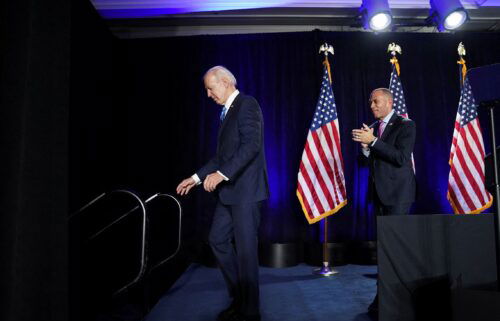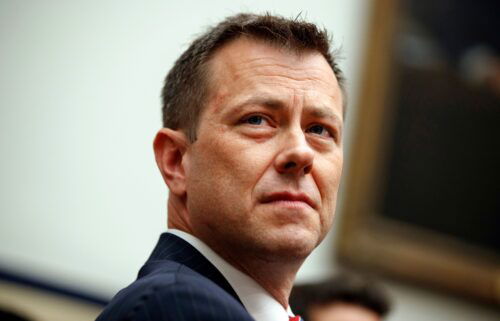Revisiting the trauma of 1960s white supremacy

It isn’t a leap to say that Jerry Mitchell’s new book “Race Against Time: A Reporter Reopens the Unsolved Murder Cases of the Civil Rights Era” is a piece of real-life horror. After all, as the subtitle suggests, it grapples not merely with the dead but with how, for decades, the normalized bigotry of the 1960s that killed so many innocent Americans went largely unpunished, in turn haunting those desperate for even a scrap of justice.
Yet “Race Against Time” is more than a book about the past. It speaks to today, arriving at a moment when history and its repetitions are very much on Americans’ minds.
Days after the book was published, for example, more than 100 masked white nationalists paraded through Washington’s National Mall, chanting “Reclaim America!” and “Life, liberty, victory!” The march was uneventful. But it was one of several such spectacles since President Donald Trump’s election in 2016 to illuminate the reemergence of white nationalism in the country’s public spaces.
To coincide with Black History Month, I recently spoke with Mitchell, who after three-plus decades at The Clarion-Ledger left and founded the Mississippi Center for Investigative Reporting, about “Race Against Time” and how its stories insinuate themselves into the current political season.
Addie Mae Collins, Denise McNair, Carole Robertson and Cynthia Wesley; Medgar Evers; James Chaney, Andrew Goodman and Michael Schwerner; Vernon Dahmer. Over the course of 400-some pages, Mitchell revisits, in diaristic detail, the four notorious instances of Ku Klux Klan violence that stole these lives and his efforts — dating back to the ’80s, when he was a rookie journalist in Mississippi — to put some of the men responsible behind bars. The following conversation has been lightly edited for length and clarity.
You’ve been writing about cold cases from the mid-century civil rights era since the 1980s, when you were a junior reporter at The Clarion-Ledger in Jackson, Mississippi. What drew you to these stories?
The injustice of it all really angered me. More than 20 Klansmen were involved in killing three young civil rights workers — James Chaney, Andrew Goodman, and Michael Schwerner — and no one was ever tried for murder. I just couldn’t wrap my head around it: Wait a minute. I’ve heard of people getting away with murder, but a triple murder?
But it wasn’t just that these guys got away with murder. It was also the fact that everybody knew that they got away with murder. It was injustice in plain sight.
In “Race Against Time,” you describe how a screening of the 1988 movie “Mississippi Burning,” which is loosely based on the murders of these three young men, also fueled your journalistic work. I watched the movie for the first time while preparing for this interview, and —
Oh, you watched it! What did you think?
Well, I really like two elements: the acting, particularly Frances McDormand’s performance, and how the movie recreates the sheer terror of the Ku Klux Klan — the distinct code of silence that allowed the group to operate with impunity. That said, it’s the exact sort of civil rights movie that Hollywood, still today, laps up, in how it gives the most screen time and dimension to the white folks involved in the struggle. Have your thoughts changed since that initial viewing?
I saw it again a few years ago and I remember feeling that there are parts of it that hold up and parts of it that don’t. You’ve got to understand that when I first watched the movie, I knew nothing of that history. So it was very powerful and visceral. I don’t think that anyone at the time walked out of that movie unaffected. They wondered: How did these guys not get charged with murder? And I think that was a legitimate question.
You played a big role in reopening murder cases against some of America’s most infamous killers, including former Ku Klux Klan Imperial Wizard Sam Bowers. Did this work change the way you view journalism?
On the one hand, I was influenced by the journalists Carl Bernstein and Bob Woodward’s 1974 book “All the President’s Men,” which is about the Watergate scandal. I read that on my journey to becoming an investigative reporter. After reading that book, and as I began to dig into these cases, I started to see the power of journalism to effect positive change.
On the other hand, at the time, I wasn’t thinking about my own work on any kind of grand scale. I saw it in terms of what needed to be known and what needed to happen, so I kept peeling back different layers.
I did realize early on that this is important, and so I started saving. I saved my notes and journals, and any kind of conversation I had with anybody, I wrote it down. So in that way, it was weirdly historical, but playing out in the present — it’s history as you’re living. I don’t know if that happens very often. I wrote the book such that readers learn as I’m learning. I pretty much start as a blank slate, so readers join my character as he figures things out.
One thing that struck me while reading “Race Against Time” was the seeming benevolence of the FBI, which I wasn’t expecting, given the FBI’s historically barbed relationship with black Americans — tapping phones, subverting civil rights leaders’ activities. Today, we hear renewed conversations about distrust in government, especially when it comes to the policing and surveillance of minority communities. Did writing about these civil rights cases complicate your understanding of the FBI?
I was conflicted, because the FBI’s history is very conflicted. Certain members were helpful to me, but it’s important to remember what the FBI has done over the years. For instance, J. Edgar Hoover, who was the first director of the FBI, hated the civil rights movement and tried to stamp it out. And so, weirdly, some of what the FBI was doing — such as spying on and trying to discredit figures including Martin Luther King Jr. — the Mississippi State Sovereignty Commission, which sought to preserve racial segregation and contributed to the 1964 deaths of the three civil rights workers, was doing, too. Knowing all that provides crucial perspective.
Speaking of perspective, how history lives in the present — how it can be made urgent or dismissed — is one of the book’s themes. What echoes of the past do you see when you look around today?
You see the rise, once again, of white nationalism. And you can’t help but note, once you begin to understand the history, that any kind of breakthrough for black Americans seems to be met, on some level, with white backlash. For instance, Red Summer occurred in 1919, after black veterans returned from World War I and there was increasing labor competition. Before that, you had Reconstruction, in response to which you had the rise of the Ku Klux Klan and the bloody quest to regain white power.
Recently, there have been similarly purposeful efforts (to maintain a racial hierarchy). In 2015, Dylann Roof killed nine black church-goers in Charleston, South Carolina. He was motivated in part by the website of the Council of Conservative Citizens, which has roots in the White Citizens’ Councils in Mississippi.
What inspired you to start the Mississippi Center for Investigative Reporting? And what role do you see it playing in today’s political environment?
Mississippi needs more investigative reporting, not less. And this is the kind of reporting that can help to bring social and political change. Think of prisons, for example. Since last year, I’ve been investigating prisons in the state, the crisis that’s been going on. It’s a whole hidden world. We basically warned the state that the prisons were going to blow up, and that’s what happened. Now it’s dealing with the consequences.
But that’s why it’s important that we do these things. If we hadn’t done that reporting and the situation had blown up, I think that people would’ve been asking: Well, what happened? But since we’ve done the reporting, there’s no mystery about what happened. That’s valuable.
I think that the tendency of governments is to run from transparency. And that’s one of the reasons why what we do is so important: We want to increase transparency. We want to let the public know what’s happening at the most basic level. We want to be proactive instead of reactive, which is one of the advantages of investigative reporting. Even when there’s no attention being paid to an issue, you can say: Hey, we shouldn’t turn away from this.



